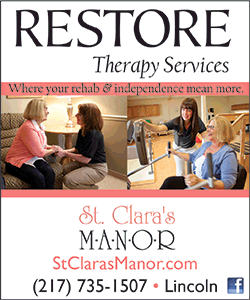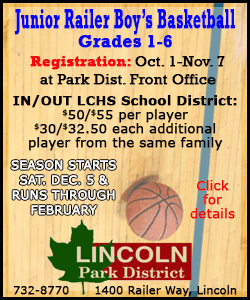|
 Historical Society member Betty Gail Wagner welcomed everyone and
introduced Rollings Saul, who has done extensive research on quilts
and how they may have been used in the Underground Railroad as a way
to transmit messages to slaves trying to escape slavery. She
reminded the audience that many slaves moved north through the
'Underground Railroad,' possibly trying to find ways to communicate
during their escape. Historical Society member Betty Gail Wagner welcomed everyone and
introduced Rollings Saul, who has done extensive research on quilts
and how they may have been used in the Underground Railroad as a way
to transmit messages to slaves trying to escape slavery. She
reminded the audience that many slaves moved north through the
'Underground Railroad,' possibly trying to find ways to communicate
during their escape.
Rollings Saul explained that one major source about the topic is
Jacqueline Tobin and Raymond Dobard's Hidden in Plain View: A Secret
Story of Quilts and the Underground Railroad, based largely on
quilter Ozella McDaniel William's stories of an Underground Railroad
Quilt Code, something Tobin had not read or heard about previously.

Rollings Saul shared that when Tobin contacted Williams for more
about the story, Williams seemed reluctant to talk to her. As Tobin
continued her research, she talked to art historians and African
American quilters, but could not verify the stories. Finally in May
1996, Tobin was able to get Williams to tell her about the quilt
code.

Rollings Saul then explained the quilt code that Williams shared
with Tobin: "There are five square knots on the quilt every two
inches apart. They escaped on the fifth knot on the tenth pattern
and went to Ontario, Canada." Based on quilt patterns, one part of
the code reportedly said, "The monkey wrench turns the wagon wheel
toward Canada on a bear paw's trail to the crossroads."
Rollings Saul said that this book set the quilting world abuzz and
was celebrated as a major breakthrough in Underground Railroad
research until historians stepped in and accused Tobin and Dobard of
doing poor research, with some even saying it was a myth.
She mentioned that Gladys-Marie Frye wrote about African American
quilters in 'Stitched from the Soul,' but it was based on oral
history and has several wrong dates.
Rollings Saul explained that Deborah Hopkinson researched the use of
quilts as a signaling device, but could not find evidence to back up
the stories, though she wrote a children's story called 'Sweet Clara
and the Freedom Quilt' with the quilts being used for messages.
Rollings Saul said that when she began her research years ago, she
found more debate over whether these codes were real; though
schools, clubs, and historical organizations shared stories about
the quilt codes. She said that some have suggested the quilts
Williams discussed with Tobin were just used in one area, though
some believed they were in various parts of the United States.
Rollings Saul said that Clarice Boswell shared her grandma's stories
of quilts displayed along the underground railroad route and a quilt
code with different interpretations, such as various codes signaling
danger, secret passages, moving by boat, going to Canada or
availability of food. Rollings Saul says that Barbara Brackman, an
expert on quilts from the era, reports that many of the block
patterns supposedly used were not from that era, and in her book
Fact and Fabrications, calls the secret quilt code a myth. Rollings
Saul has found various articles, however, that show some of the
patterns reportedly used were very old.
Rollings Saul said that in 2005, Teresa Kemp, great niece to the now
deceased Ozella McDaniel Williams, continued sharing the stories of
the underground railroad by opening a secret code museum, but the
codes were a bit different than the ones Williams had shared. The
museum soon came under criticism because historians claimed the
patterns were too new to have been from the underground railroad.

Rollings Saul noted that after a bout with cancer, Kemp had memory
loss causing her to forget much of her 25 years of research and the
codes, so she had to redo much of it. Kemp cites textile maps as
part of the codes, but critics say these codes had different
meanings in Africa.
Rollings Saul said that Lee Fellner, author of Betsy Ross: The
Underground Railroad Quilt Code found that versions of the code were
contradictory and concluded the code was a myth.
When an audience member asked where the quilts were supposed to have
been placed, Rollings Saul explained that some say quilts were hung
on clotheslines, while others say on church belfries, so their
placement is uncertain. She also reported that even the meaning of
codes and the colors have been debated. After sharing the intriguing
history of quilts and the Underground Railroad, Rollings Saul ended
her presentation by declaring, "Decide for yourselves whether it is
fact or fiction."
After the presentation, Historical Society member Julia Cross
provided information about the "Bed Turning" that was going to be
done, saying that the quilts placed on the bed each had a special
story and pattern.
[to top of second column] |



As Ladonna Gass and Marilyn Marten held up each quilt for the
audience, Phyllis Hitchcock described the quilt's pattern and story.
These quilts included one with a double wedding ring pattern, a
memory quilt with squares made from a wedding tablecloth, a century
old star quilt, a quilt from someone's trousseau in 1927, a quilt
with a zig zag pattern that won first place at the Illinois State
Fair, a sunbonnet pattern baby's quilt, an embroidered quilt, a few
heirloom quilts, a quilt made in Japan and used to teach Japanese
women new cutting patterns, two signature quilts from 1924 with many
Hartsburg and Emden names on them, a 1930s postage stamp pattern
quilt, and a Bethlehem star pattern quilt. Most of the quilts were
either made or owned by people from the community.

Those attending the tea were fascinated to learn more about the
debates surrounding the use of secret codes on Underground Railroad
quilts, appreciated hearing the stories of quilts from around the
community, and enjoyed viewing many beautiful quilts.
[Angela Reiners]

Other items on display at the
Quilt Tea

A quilting table

A 1924 Signature Quilt from the Hartsburg-Emden area


|